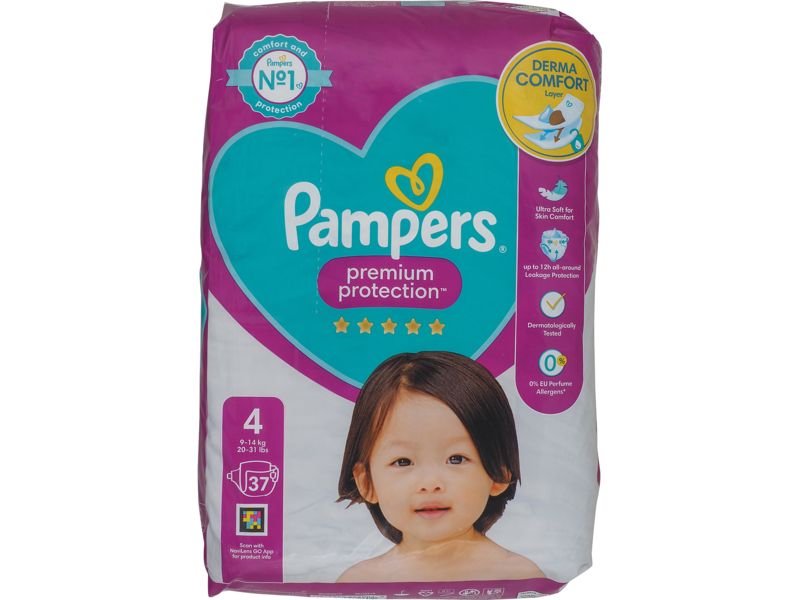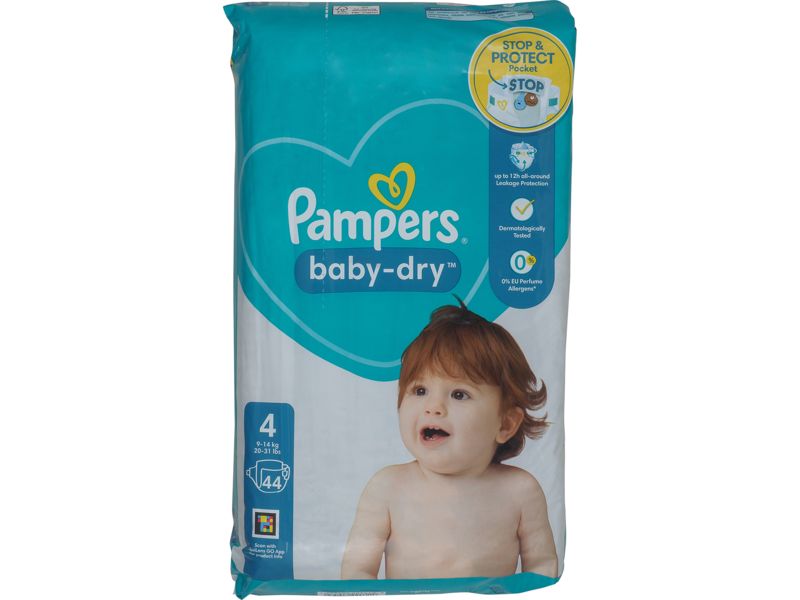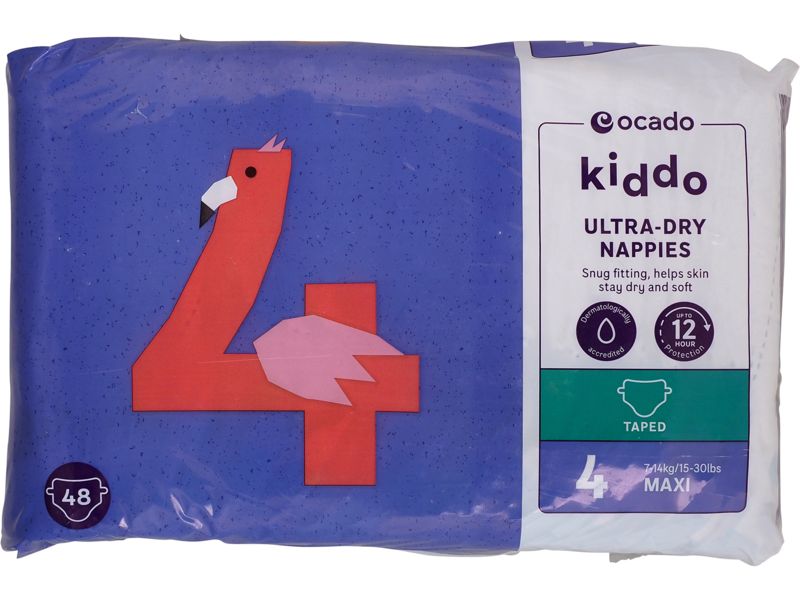By clicking a retailer link you consent to third party cookies that track your onward journey. If you make a purchase, Which? will receive an affiliate commission which supports our mission to be the UK's consumer champion.
Best reusable nappy brands for 2024

To find the best reusable nappies, we asked parents to rate 20 brands, including Bambino Mio, Kit & Kin and Little Lamb.
For each nappy brand, we'll tell you how parents rate the absorbency, fit, comfort, ease of use and value for money, so you can choose the best reusable nappies for your little one.
Keep scrolling for the best and worst nappy brands. We also share tips on which nappy type to choose, how much to spend and how to wash reusables.
Keep your costs down and kids happy. Sign up for our Family newsletter, it's free monthly
Best vs worst reusable nappy brands
We calculate a customer score for each brand, which is based on parents' overall satisfaction with the nappies and how likely they are to recommend them. You can see a preview of the best and worst customer scores below:
- Best brand: 75% This brand scored well in all areas, but parents were particularly pleased with the fit of this brand's nappies.
- Worst brand: 59% Parents were less impressed with the fit of this brand's nappies and even more unhappy with their value for money.
Reusable nappy brand ratings
Only logged-in Which? members can view our recommendations in the table below. If you’re not yet a member, join Which? for access to our test results.
| Brand | Customer score | Absorbency | Fit | Comfort | Ease of use | Value for money |
|---|---|---|---|---|---|---|
| Baba & Boo (56) | ||||||
| Bambino Mio (94) | ||||||
| Bambooty (36) | ||||||
| Beaming Baby (40) | ||||||
| Blueberry (33) | ||||||
| Bright Bots (34) | ||||||
| BumGenius (40) |
Are reusable nappies worth it?

Reusable nappies are a good way to cut costs because they work out cheaper than disposable nappies in the long run. They also help to reduce the number of disposable nappies ending up in landfill.
However, they need to be washed and dried after every use, so they aren’t as convenient as disposable nappies.
Reusable nappies – also known as washable nappies, cloth nappies or real nappies – have evolved significantly in the past decade and are now a popular choice for eco-conscious parents.
They come in a vast range of colours and fabrics, often look like disposables, and can be just as easy to put on and take off again.
Reusable nappies: pros
- Cheaper than disposable nappies in the long run, particularly if you use them for more than one child.
- Reduces the number of disposable nappies ending up in landfill.
- May irritate your baby’s skin less than disposable nappies, as they’re more likely to be made of natural fibres.
Reusable nappies: cons
- Less convenient than disposable nappies, as you need to wash and dry them after each use.
- Higher water and energy usage from frequent washing.
- Can be difficult to fit clothes over bulkier nappies.
If you don't want to use reusable nappies, see our best disposable nappies instead
Reusable nappy types
Reusable nappies come in a range of different designs. Some have layers attached, while others have separate parts that you need to join together.
You might want to try out a few types of nappy before you buy in bulk, to see how you and your baby get on with them.
All-in-one reusable nappy

All-in-one nappies have an absorbent inner layer attached to a waterproof outer layer, and the two parts are sewn together.
Pocket reusable nappy

Pocket nappies are similar to all-in-ones, but have a pouch in the nappy cover that you stuff with a fabric insert for absorbency.
Two-part reusable nappy

Nappies with a two-part design have a separate inner nappy and outer wrap. You can choose between a shaped or flat nappy.
Shaped nappies have elasticated waist and leg cuffs and are usually fastened with Velcro or poppers.
Flat nappies are simply a piece of fabric that you fasten around your baby using a nappy grip. You can either buy Terry squares, which need to be folded to a suitable size and shape, or you can buy pre-folded nappies. These are the cheapest type of reusable nappies.
One-size vs sized nappies
One-size or 'birth to potty' reusable nappies can be adjusted to fit your baby as they grow.
With sized nappies, you'll need to buy different nappies as your baby grows. These are useful for newborns, as you might find that birth to potty nappies are too big for small babies.
How much do reusable nappies cost?
Reusable nappies have a higher upfront cost than disposable nappies, but they work out cheaper in the long term, particularly if you use them for more than one child.
The cost of reusable nappies varies depending on the type and brand you choose. In 2024, Moneyhelper.org, the government’s money advice service, estimated the average overall cost of using leading-brand disposable nappies at £1,000. It puts the average cost of reusable nappies at just £400 (including laundry costs), giving an overall saving of £600 over the first two and half years.
How to save money on reusable nappies
These four tips could help you to reduce the cost of reusable nappies:
- Check whether your local council runs a reusable nappy incentive scheme. These offer free starter kits or vouchers, making it cheaper to try them out.
- Consider buying second-hand reusable nappies.
- Save on energy costs by line-drying nappies rather than tumble drying.
- Use an energy-efficient washing machine. See our washing machine reviews to find out which models we recommend as Best Buys.
Not sure which products are worth spending money on? See the best and worst baby products according to parents
How many reusable nappies do I need?
Depending on your baby’s age, how often they need changing and how frequently the nappies are washed, you’re likely to need around 15 to 25 reusable nappies.
You won’t need as many if you’re using them alongside disposable nappies or when you’re potty training.
Where to buy reusable nappies
There are many places you can buy reusable nappies, including supermarkets, baby stores and directly from the manufacturer.
It's important that you pay attention to the returns policy, though – if you need to replace an item or claim a refund, you should know your rights.
For more details on shopping online safely and getting refunds, see our online shopping advice guides.
Here are some of the most-searched for retailers for reusable nappies:
- Aldi has in the past stocked own-brand Mamia reusable nappies costing around £4.99 per nappy. However, it's not currently stocking any, but keep an eye out in case they come in during a Special Buy baby week.
- Boots sells own-brand and branded reusable nappies. Prices start at £9.99 per nappy and go up to £20 for reusable nappies from Kit & Kin. Delivery to a store is free if you spend £15 or more, but for home delivery you need to spend £25. You can return any unused items free of charge within 35 days for a refund or replacement.
- Ocado sells Bambino Mio nappies usually costing £16 (but sometimes on offer at £10) per nappy. Delivery charges range from free to £6.99 depending on slot availability, and if your order is less than £75, there's a minimum charge of £2.99 and a maximum of £6.99. For standard orders of £75 or more, you may be offered free delivery.
Aldi vs Lidl nappies: how do they compare?
How do reusable nappies work?

Reusable nappies are made up of an absorbent inner layer, containing a washable or disposable liner and a waterproof outer layer, called the wrap. You can also choose to add a booster pad for extra absorbency.
They’re available in a variety of materials, including cotton, bamboo, hemp and microfibre. The outer wraps can be made of fleece, wool, PUL (a type of laminated fabric) or waterproof plastic.
Instead of binning the nappy once used, you put the reusable nappy in a designated bucket ready to be washed. When clean and dry, it can be worn again.
If your child isn't feeling well, see our guide to using Calpol and other infant paracetamol pain relief. We run you through the essentials, including ingredients, dosage and price
Are reusable nappies more eco-friendly?
By the time a child is potty trained, they could have got through more than 5,000 disposable nappies. According to recycling charity Wrap, this adds up to an estimated 3bn nappies thrown away every year in the UK. As disposable nappies can’t usually be recycled, most end up in landfill.
The most recent Life Cycle Analysis (LCA) study on the environmental impact of reusable and disposable nappies was carried out by Defra in 2023.
It discovered that reusable nappies produce 25% less CO2 than single-use disposable nappies. The carbon footprint of a disposable nappy is 457kgCO2eq, whereas the carbon footprint of a reusable nappy is lower at 345kgCO2eq. CO2eq is a measure used to compare the emissions from various greenhouse gases on the basis of their global-warming potential (GWP).
However, the report did highlight that reusable nappies have a higher impact across other environmental areas. This is mainly because of the electricity used in prewashing, washing and tumble drying reusable nappies. Add to that the water used by the washing machine, toilet flushing and the treatment of wastewater and detergent.
This impact could be reduced by using energy-efficient washing machines and tumble dryers or by air-drying nappies. Reusing nappies for a second child could also reduce their climate change impact by 6.5% and water consumption by 30.9%.
The report also points out that user behaviour can have an environmental impact. Consumer research shows that children are being potty trained at a later age, which means they use nappies for longer. In the previous LCA study from 2008, looking at nappy use for children aged 2.5 years, 19.4% were using disposable nappies and 17.4% were using reusable nappies.
Fast forward to 2023 and it found 37% of toddlers this age used disposable nappies and 35% used reusable nappies. If parents are able to get their child potty trained at an earlier age, the environmental impact of nappy use (for either type) could be reduced.
Read our potty training guide for tips on how to get your little one out of nappies.
How to clean reusable nappies?
- When the nappy is ready to be changed, take out the liner and flush any solids down the toilet.
- Place used nappies into a bucket containing a mesh liner. There’s no need to soak them before washing.
- Clean them in your washing machine every two to three days. If you’re using two-part nappies, you only need to change the outer wrap every 12 hours, unless it’s heavily soiled.
- Run a cold rinse cycle first, then add detergent or washing powder and wash at the temperature recommended in the care instructions.
- Hang up the nappies to line dry. Some nappies are suitable for tumble drying, although this will increase costs.
Keep your baby safe and secure in one of our best child car seats and top pushchairs



